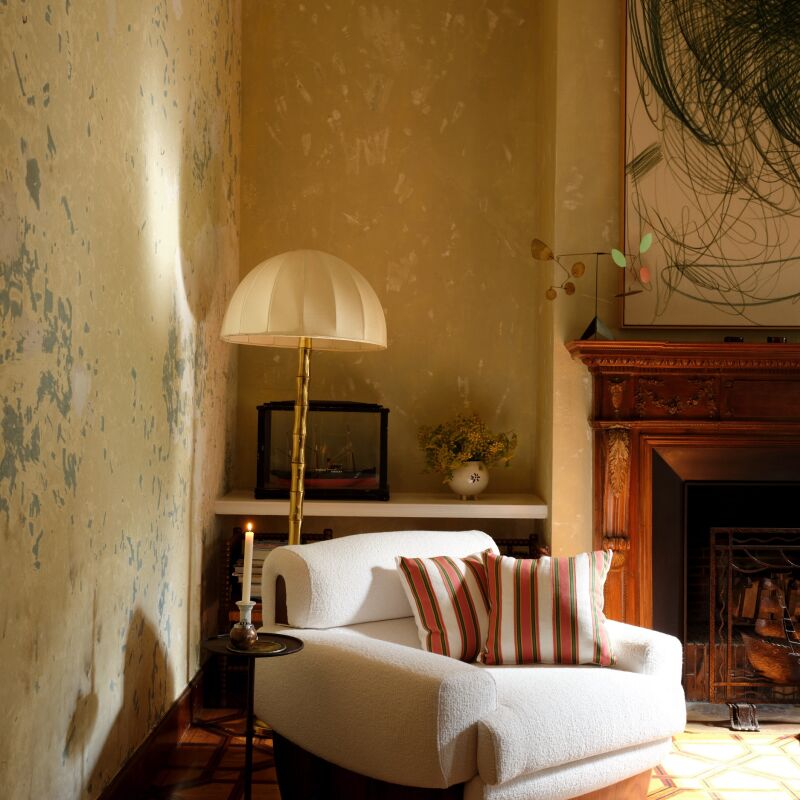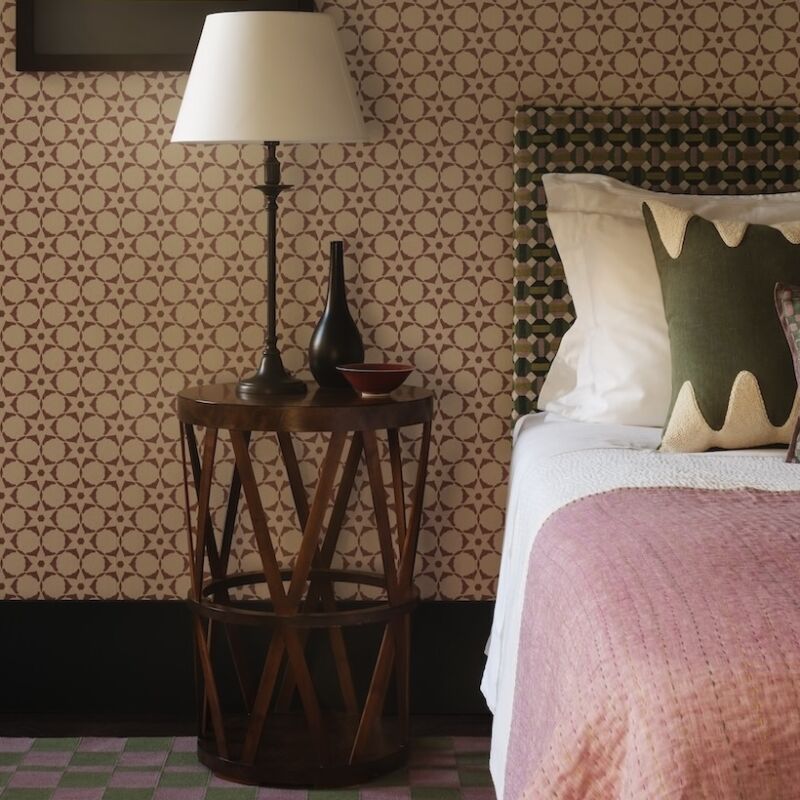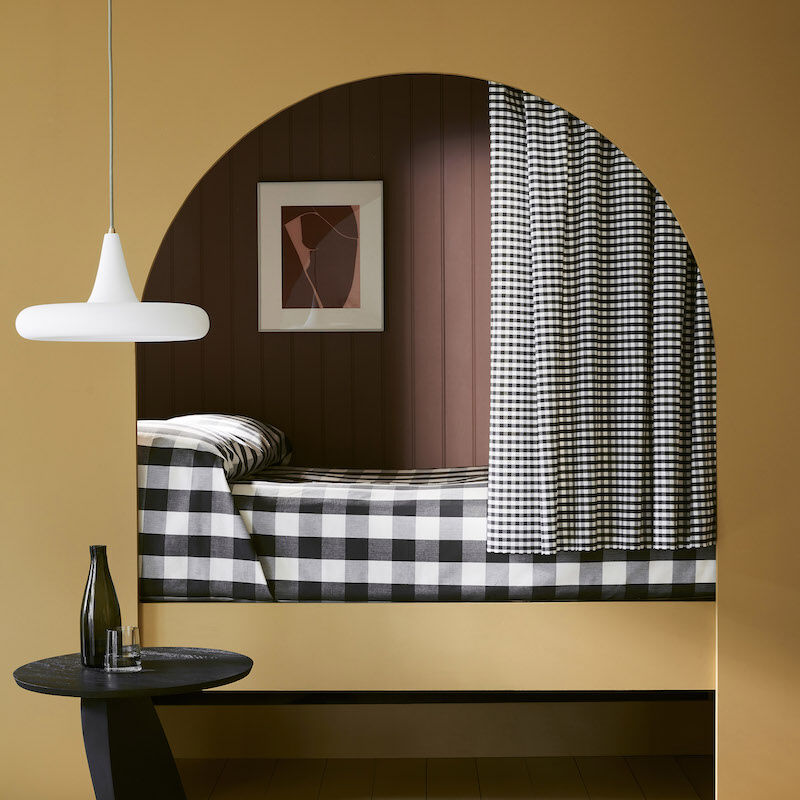Janet Bishop is the curator of painting and sculpture at the San Francisco Museum of Modern Art. (One of her former exhibitions, for example—”The Steins Collect: Matisse, Picasso, and the Parisian Avant-Garde,” now a book—reunited the collections of Gertrude Stein and her family, who installed the art in their Paris apartments salon-style. We asked Janet to give us advice on how we should go about displaying art in our own homes. Here’s what she has to say.

Any advice on how to hang and display art?
- Janet Bishop: As a rule of thumb, hanging art on a center line of 58 to 60 inches works well. When stacking or clustering works, take into account the total height, including the space you envision between the frames, and center that. Of course, there are adjustments to be made to accommodate furniture and whatever architectural detail the spaces might have. Hanging art in domestic spaces is trickier than working in the white box of the gallery.

Should we avoid sunlight?
- JB: You wouldn’t want to put works on paper or photographs in areas that are flooded with sunlight, especially watercolors or color photographs, which can easily fade. My flat is sunny and I gravitate to works on paper. Since I’m not as vigilant about rotating the art I live with as we are at SFMoMA, I pay a little more for UV Plexiglas when I get things framed.

What kind of gallery white is best? What color do you use, and would you use it in a home?
JB: At SFMoMA, our default color is a custom white by Dunn Edwards. Before our Third Street building opened, our exhibitions designer developed it with a paint specialist, taking into account the varied character of the art we show and the particular nature of our lighting. Anyone can order it, but I prefer a little more tone on my walls at home. My current favorite is Benjamin Moore’s Seapearl—a pale warm gray. When my husband first painted a sample for me, he said, “Well, we’re certainly not going to shock the neighbors.” I love the way art looks against it.
What’s your pet peeve when it comes to hanging art?
JB: It always makes me a little sad is when I visit a lovely home that has no art at all—maybe some framed posters and family photographs, but not much more.

Art and scale: What’s your advice on how to live with large pieces of art?
JB: I like to see a mix of small and large works in a home—things that you need to get up close to in order to fully appreciate, and larger ones, that offer focal points in a room. For paintings or other works that are too tall to hang on a center line, it often works to place them around 15 inches off the floor.
Framing tips?
JB: I generally prefer wooden frames with simple profiles that complement but don’t distract. Sterling Art Services has many options and does excellent work. I also really love Peter Kirkeby’s hardwood frames. With works on paper, it is nice to float the whole sheet if you can rather than using an overmat. And make sure there is a little space between the glazing and the surface of the artwork. Let the art breathe in its frame.

What about art on a budget?
JB: Bay Area presses such as Crown Point in San Francisco and Paulson Bott in Berkeley both work with terrific rosters of contemporary artists. Because the etchings are editioned, they tend to be reasonably priced in comparison to a drawing or painting by the same artist. [N.B.: For more affordable art options, see our post Trend Alert: New Geometry, The Return of the Art Poster.]

What’s your greatest art find?
JB: The art that I have at home is mostly by friends or local artists I’ve worked with (or by my father-in-law, who made wooden birds and boat models). Some years back, I picked up three watercolors of spider webs by Kathryn VanDyke from a sale of postcard-size art at Four Walls in San Francisco. I’m pretty sure they were $2 each. (Biggest gap between bill for art and bill for framing.)
Whose work would you like to own now (if money were no object)?
JB: I’d say one of Tauba Auerbach’s “Fold” paintings. They are just stunningly beautiful. Although I’d need a bigger house to go with it.

To see an artist and family in their own home, see our posts:
- Renovated Warehouse Studio in London
- A Subtly Detailed Kitchen in Stainless and Wood for a DC Artist and Her Family
- Layers of History—and Color—in an Artist Couple’s 1828 Manhattan Townhouse
N.B.: This post is an update; the original story ran on August 9, 2013.
Frequently asked questions
What are some tips for displaying art at home?
Remodelista offers 10 expert tips for displaying art at home.
Are there any general rules for hanging art?
The article suggests hanging art at eye level and in proportion to the wall.
Should I mix different styles of art together?
Yes, the article suggests mixing different styles of art together to create a more eclectic look.
What are some unique ways to display art?
The article suggests using a picture rail, hanging art in a grid pattern, and using floating shelves.
Should I frame all of my art?
No, the article suggests leaving some art unframed or using other types of frames such as acrylic or shadowbox frames.
How can I create a gallery wall?
The article suggests creating a mock-up of the gallery wall first and using a variety of frame styles and sizes.
Should I use artwork to decorate a small space?
Yes, the article suggests using artwork to add visual interest and personality to a small space.
Can I hang art in my bathroom?
Yes, but it's important to choose the right type of art and use proper framing and hanging techniques.
Should I hang art in a room with patterned wallpaper?
Yes, but it's important to choose the right type of art and frame to complement the wallpaper.
How can I make my art collection look cohesive?
The article suggests using a common color palette or theme, using similar framing, and creating a salon-style arrangement.




Have a Question or Comment About This Post?
Join the conversation